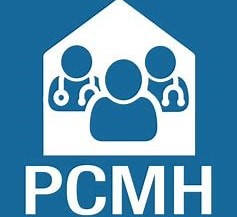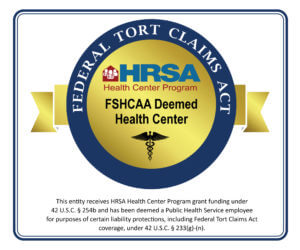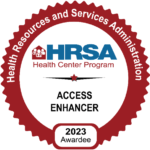Inflammatory Bowel Disease - Crohn's Disease
Introduction
Crohn’s disease is a chronic autoimmune inflammatory bowel disease. It is believed to result when the immune system, which usually fights diseases, attacks the cells in the GI tract. When the cells in the digestive system are attacked, the cell lining becomes swollen and painful. Crohn’s disease can cause changes in bowel movement patterns, pain, and numerous other medical complications.
The exact cause of Crohn’s disease is unknown. It cannot be prevented at this time. Treatment for Crohn’s disease includes medication and potentially surgery. Although Crohn’s disease is a life long condition, medical treatment and monitoring can help people live a good quality of life.
Anatomy
Your small intestine breaks down the liquid from your stomach even further so that your body can absorb the nutrients. The remaining waste products from the small intestine travel to the large intestine.
The first part of the colon absorbs water and nutrients from the waste products that come from the small intestine. As the colon absorbs water from the waste product, the product becomes more solid and forms a stool. The large intestine moves the stool into the sigmoid colon, where it may be stored before being traveling to the rectum. The rectum is the final 6-inch section of your digestive tract. No significant nutrient absorption occurs in the rectum or anal canal. From the rectum, the stool moves through the anal canal. It passes out of your body through your anus when you have a bowel movement.
Causes
Symptoms
Diagnosis
A lower gastrointestinal series or barium enema test provides a series of X-ray images of the large intestine. A barium enema is commonly used to screen for colon cancer and bowel diseases. Prior to taking X-rays, barium, a chalky substance, and air are used to fill and expand the colon. The barium reveals the bowel’s shape and position on the X-ray images. A barium enema is an outpatient procedure that is performed at a doctor’s office or a hospital’s radiology department.
A colonoscopy is a procedure that uses a colonscope to view the inside lining of the entire colon. A colonscope is a long thin tube with a light and a viewing instrument that sends images to a monitor. The colonscope allows a doctor to examine the inside of your colon for cancer, polyps, and other medical diseases. A tissue sample or biopsy can be taken with the colonscope. You will receive medication to relax you prior to and during the test.
Treatment
The most common surgery for Crohn’s disease removes the diseased section of the intestine. The surgery can improve symptoms of Crohn’s disease, but it does not cure it. Crohn’s disease commonly comes back after surgery, frequently at the site where the incision is made.
In some cases, a stoma, an opening in the abdomen may need to be surgically created to remove stools. The procedure is called an ostomy. An ostomy is necessary if stools can no longer exit the body through the rectum and anus. The surgery involves attaching the intestine to the stoma. A collection bag is worn on the outside of the stoma. The bag requires regular emptying and cleaning. The term for the ostomy depends on which part of the intestine is attached to the stoma, for instance a colostomy or ileostomy. People that have a large section of their intestine removed may need to receive intravenous (IV) nutrition for the rest of their lives.
Medical complications associated with Crohn’s disease need to be treated as well. You will need to make and keep regular appointments with your doctor to monitor your condition. Although Crohn’s disease is a life long condition, treatment and monitoring can help people live a good quality of life.
The experience of Crohn’s disease and Crohn’s disease treatments can be an emotional process for people with the condition and their loved ones. It is important that you receive emotional support from a positive source. Some people find comfort in their family, friends, co-workers, and faith. Support groups are another good option. They can be a source of information and support from people who understand what you are experiencing. Ask your doctor about support group locations in your area.
Prevention
Am I at Risk
Risk factors may increase your likelihood of developing Crohn’s disease. People with all of the risk factors may never develop Crohn’s disease; however, the chance of developing the condition increases with the more risk factors you have. You should tell your doctor about your risk factors and discuss your concerns.
The United States has the highest incidence of Crohn’s disease in the world. Crohn’s disease occurs most frequently in Caucasians. In the United States, Europe, and South Africa, Crohn’s disease is more common among people with European-Jewish ancestry. Most cases of Crohn’s disease are diagnosed in adolescence and early adulthood; however, the condition can develop at any age.
Crohn’s disease risk factors:
_____ Slightly more men than women get Crohn’s disease.
_____ Crohn’s disease appears to have an inherited genetic trait. If your family members have Crohn’s disease your risk for developing the condition is increased.
_____ Smoking cigarettes increases the risk of developing Crohn’s disease or can worsen the presentation of the disease.
Complications

Copyright © - iHealthSpot Interactive - www.iHealthSpot.com
This information is intended for educational and informational purposes only. It should not be used in place of an individual consultation or examination or replace the advice of your health care professional and should not be relied upon to determine diagnosis or course of treatment.
The iHealthSpot patient education library was written collaboratively by the iHealthSpot editorial team which includes Senior Medical Authors Dr. Mary Car-Blanchard, OTD/OTR/L and Valerie K. Clark, and the following editorial advisors: Steve Meadows, MD, Ernie F. Soto, DDS, Ronald J. Glatzer, MD, Jonathan Rosenberg, MD, Christopher M. Nolte, MD, David Applebaum, MD, Jonathan M. Tarrash, MD, and Paula Soto, RN/BSN. This content complies with the HONcode standard for trustworthy health information. The library commenced development on September 1, 2005 with the latest update/addition on February 16, 2022. For information on iHealthSpot’s other services including medical website design, visit www.iHealthSpot.com.







